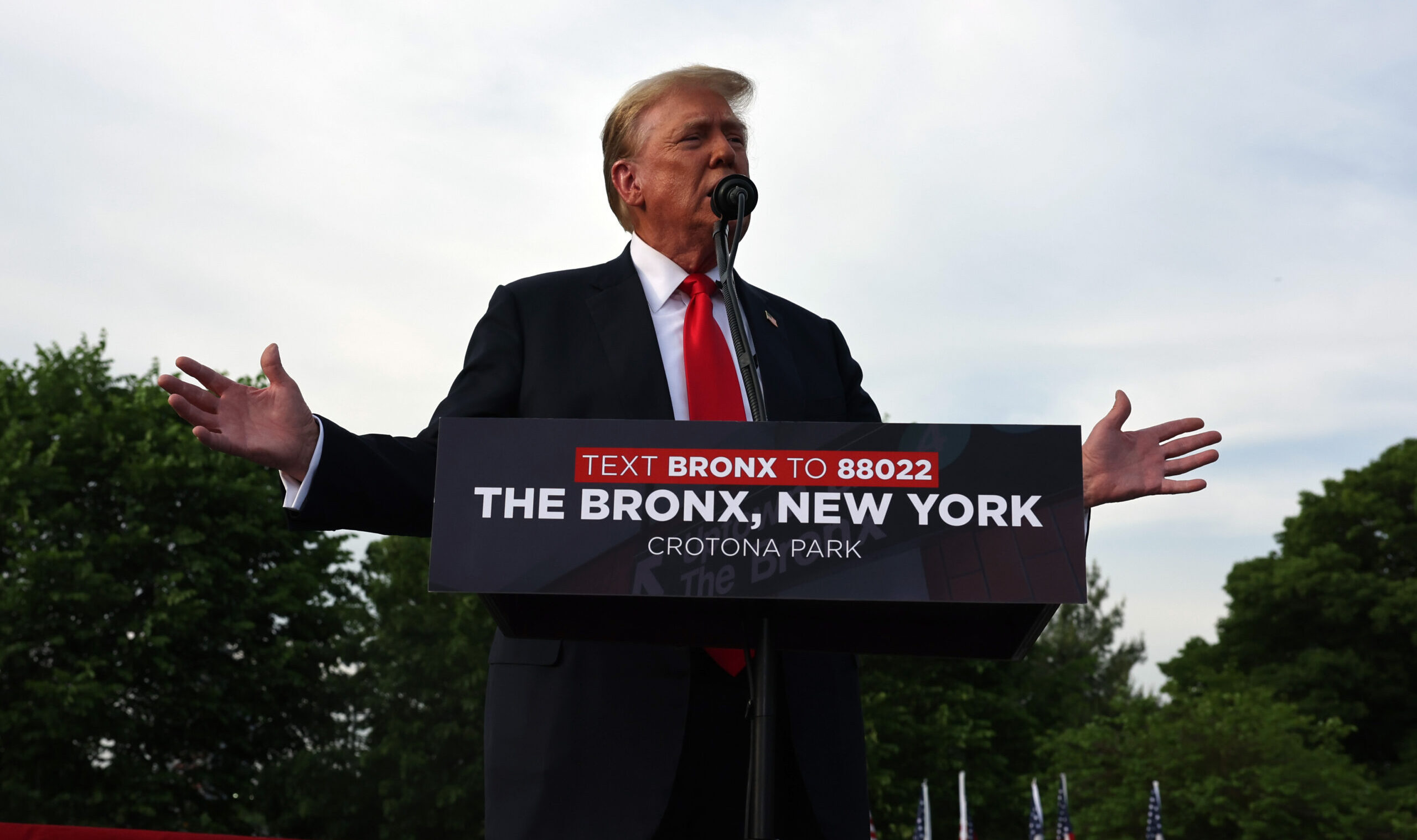Trump’s Bronx Rally May Show the Future of the GOP
The Republicans aren’t a multiracial, working-class party yet—but the gains have been undeniable.

In 2013, I began working on a city council campaign in Queens, New York and we desperately needed more people to man the phones. We put out an ad on a local job website and a young Hispanic man from Northern Queens walked in our office a few days later. After describing the job to him, he asked what political party this was for; when I replied Republican he looked stunned. “I’ve never actually met a Republican before,” he replied.
He probably wasn’t lying.
The Republican Party was basically non-existent in large swaths of the nation’s largest city, including big parts of Queens and Brooklyn and almost the entire borough of the Bronx. In the most recent presidential election the year prior, Mitt Romney won less than five percent of the vote in six state house seats in the Bronx. Throughout the whole borough of the Bronx, he won less than 30,000 votes to President Obama’s nearly 340,000 votes—the worst performance for a Republican ever.
So when Trump announced that he was holding a rally in the Bronx, it was mocked by the left as a political stunt and rumors spread that he would need to bus in his white voters from other parts of the city to draw a crowd. House Minority Leader Hakeem Jeffries tweeted, “The Boston Red Sox was more popular in the South Bronx than Donald Trump. Go home.”
That may have been true of Republicans under Romney, but it’s less so under Trump.
While Romney couldn’t muster even five percent in six of the Bronx’s 10 state house seats, Trump received double digit support in every district but one, including in all those in the South Bronx.
Nonetheless, in this Democratic stronghold in a deep blue state, with no organized Republican Party to speak of, things have begun to change organically.
From 2016 to 2020, President Trump increased his support by 29,943 votes while Biden only managed to net 1,728 more votes than Hillary Clinton. This came without any door-knocking, commercials, or campaign funds being directed towards these voters.
This change didn’t stop with Trump.
In the next year’s mayoral election, the Republican Curtis Sliwa won more than 20 percent of the vote in the Bronx or 25,843 votes, more than the last two Republican candidates despite running an underfunded campaign where he was never considered competitive.
The following gubernatorial election showed even further gains, where Lee Zeldin won nearly three times as many votes as the previous Republican candidate. The last Republican to even get 20 percent of the vote was Governor George Pataki during his third term re-election when the county was much whiter and Republican.
Unlike countless other politicians, who visited largely minority crowds and greeted them with broken Spanish like Michael Bloomberg, ethnically ambiguous accents like Hillary Clinton, promises of amnesty and better government healthcare like George W. Bush, or speeches casting them as victims like Joe Biden, Trump spoke to them as being part of the ancestral American experience:
Subscribe Today
Get daily emails in your inbox
When New York started as a small rugged Dutch trading post near the tip of Manhattan in 1624, what you see around you is nothing more than wilderness and marsh. But by the muscle and backbone and genius of the people of New York, we built the city into the towering forest of iron, aluminum, concrete and steel. We made the city and state into the capital of global commerce. We turned our hometown into the bustling center of a confident, glamorous American culture and we inspired the entire world. We inspired the world.
It was hardworking patriots like you who built this city, and it is hardworking patriots—and this is something, you can say it and you can say it a million times and you can emblazon it—it’s hardworking patriots like you who are going to save our country.
It didn’t matter if they were first generation Americans, the descendants of Ellis Island immigrants, or Mayflower descendants, Trump painted them in the image of the working-class coalition that created New York City.
The idea of a multiracial, working-class party has become a Republican fantasy over the last four years; while the GOP has had some success at the gubernatorial level, it still remains a dream. The 2024 election won’t deliver the Bronx to the Republicans, but it could offer a vision of the future.